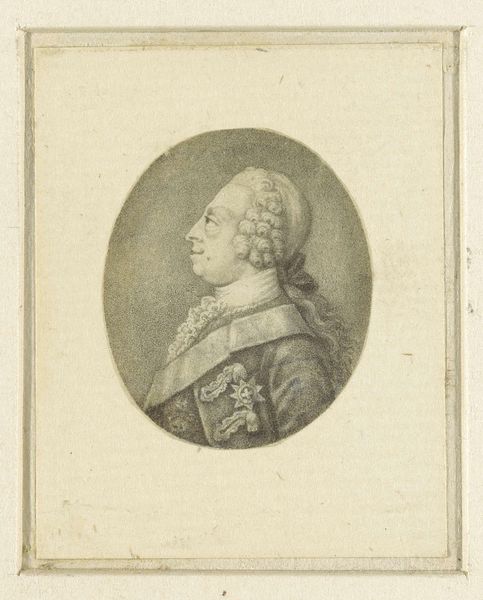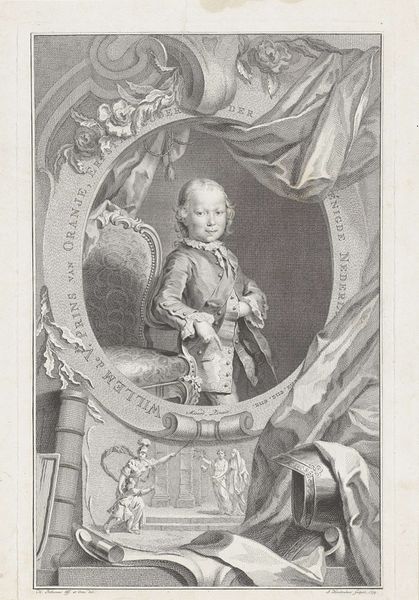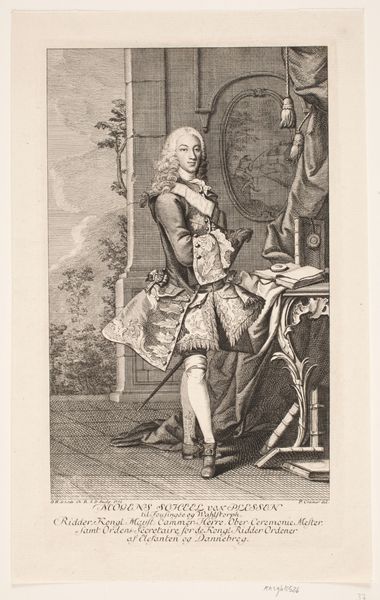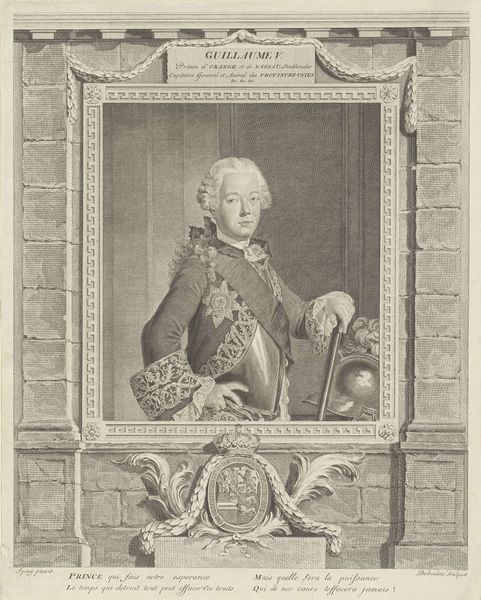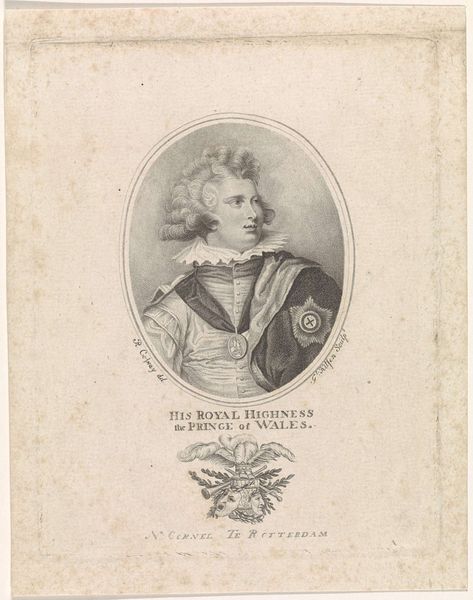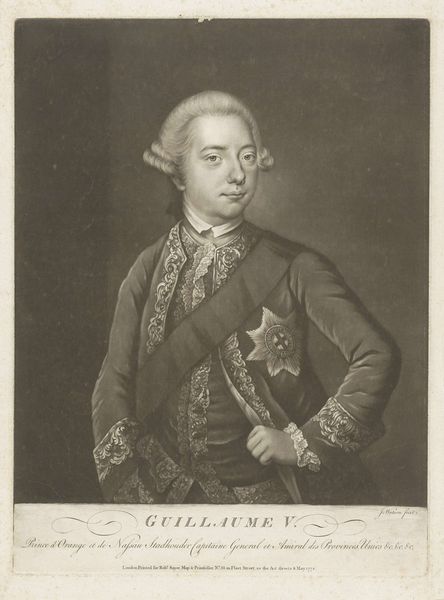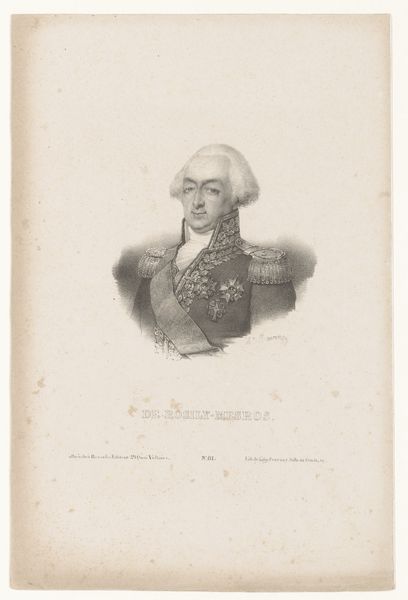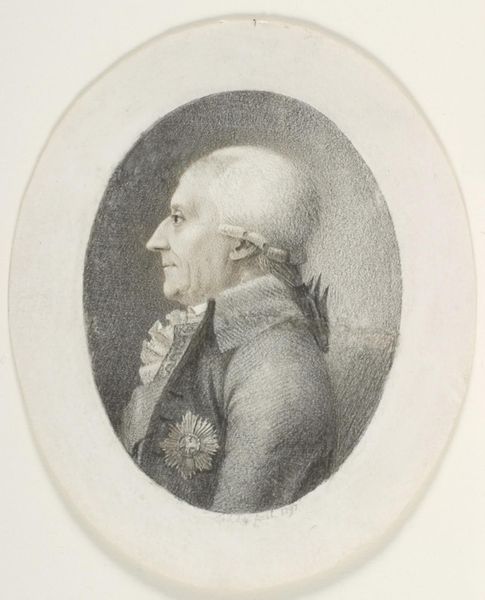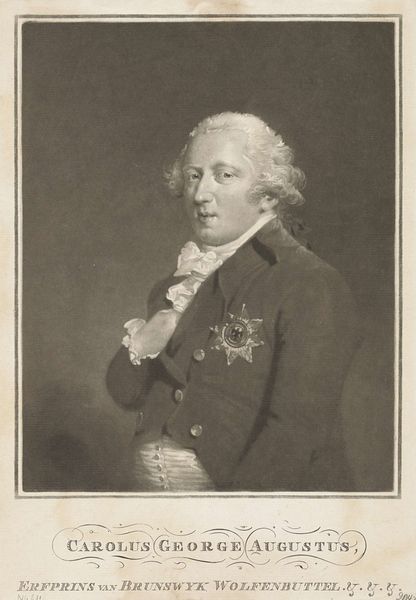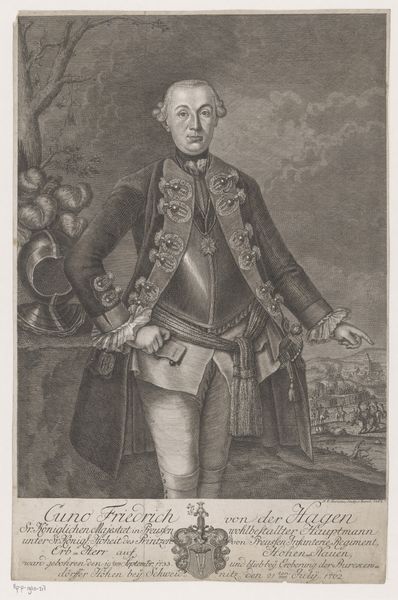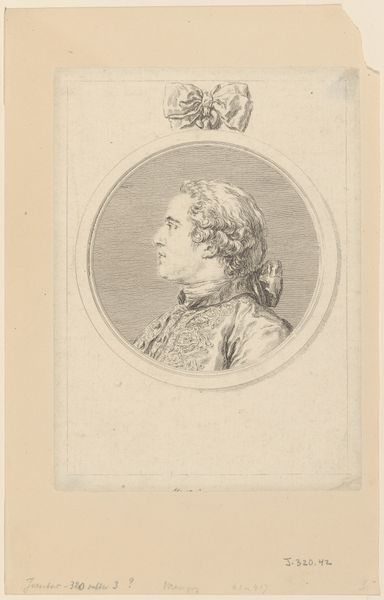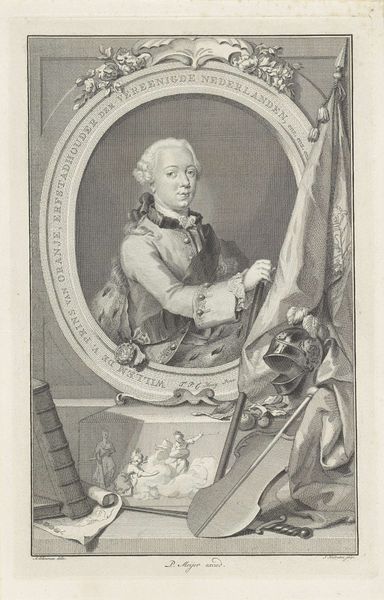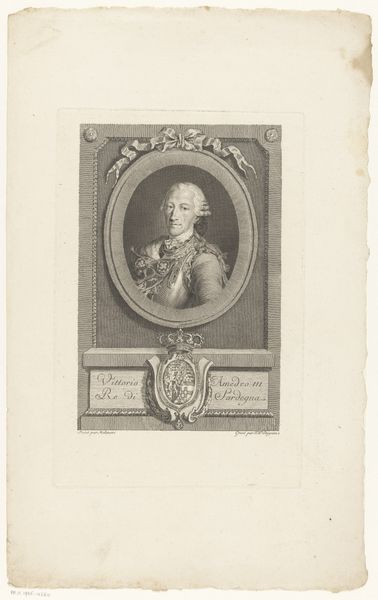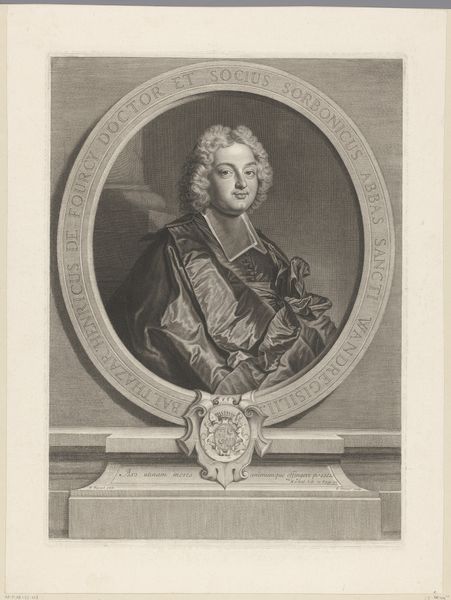
Dimensions: height 213 mm, width 137 mm
Copyright: Rijks Museum: Open Domain
Editor: Here we have an engraving from the 19th century, a portrait of Willem V, Prince of Orange-Nassau. The rendering almost feels satirical, particularly the way the engraver captured his face. What historical context informs the interpretation of this work? Curator: Considering it through a historical lens, this engraving emerges from a complex political landscape. Willem V was the last Stadtholder of the Dutch Republic, a period marked by growing social unrest and the rise of Patriot factions challenging the House of Orange. How might this portrait participate in shaping or reflecting public perception of Willem V during a turbulent era? Editor: It makes me wonder if the engraver’s intention was to undermine his authority, especially if it was distributed widely. Was there an established visual language of power in portraiture that this work deliberately subverts? Curator: Exactly. Official portraiture of the time often emphasized idealized representations of power, employing specific symbols and compositions to convey authority. This print seems to gently play with, or even mock, that tradition, inviting viewers to consider Willem V's leadership and legitimacy during a time of revolution and shifting political alliances. How do you think the artist's choices might contribute to or detract from the public’s faith in leadership? Editor: I see. It's more than just a portrait; it’s a political statement, hinting at a broader narrative of a leader struggling to maintain control. I appreciate you highlighting how visual choices tie into historical context. Curator: Indeed. By examining the social and political context of this work, we move beyond simple aesthetics and reveal its complex dialogue with the past and how images are weaponized even today.
Comments
No comments
Be the first to comment and join the conversation on the ultimate creative platform.
